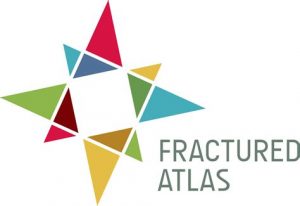Many new nonprofit organizations are trying to figure out the best start for their organization. Filing the state and IRS forms can be expensive and time consuming. Nonprofits often seek to get grants right away, but can not do so while they are waiting for their tax exempt status determination letter from the IRS. With this in mind, many nonprofits seek to obtain fiscal sponsorship.
Fiscal sponsorship is a formal agreement between a 501c3 tax exempt nonprofit and a program or project with a similar mission. There are some very important things for both the fiscal sponsor and the nonprofit to understand when deciding to work together.

There are many nonprofits throughout the country that do fiscal sponsorship. One of these is Fractured Atlas, which focuses on art projects.- The fiscal sponsor’s board of directors is the governing body for the program/project. Although the potential nonprofit program/project may have an advisory board, the final say of the finances and activities are governed by the fiscal sponsor board 501c3 nonprofit. This is because the fiscal sponsor takes on all the risk and it is their tax id number and 501c3 tax exempt status that is being used to accept donations and apply for grants. If the fiscal sponsor wants to change or eliminate the program/project, they have that full right.
- In line with the risks and responsibilities of the fiscal sponsor, they are required to include the finances, duties and activities of the program/project on their annual Form 990. It is critical that all income and expenses are run through the fiscal sponsor and complete openness and transparency is shared between the manager of the program/project and the fiscal sponsor.

- Fiscal sponsors charge fees to the potential nonprofit program/project. These fees usually range between 10% and 15% of the organization’s total budget. Fiscal sponsors must use their staff and time to manage the relationship and take on the greatest risk in the relationship.
- Grant applications are done through the fiscal sponsors tax id number. The fiscal sponsor receives the money and is responsible for ensuring the grants purpose is carried. Some foundations will not give to fiscal sponsors and so you won’t be able to apply for those grants. The fiscal sponsor are the ones recognized for the grant, which does not help the potential nonprofit in getting more grants in the future.
Fiscal sponsorship can be a good start for a potential nonprofit and can help in getting grants. They can help a nonprofit to get the jump start they need, determine if there is a need for the program and ensure a very small nonprofit has the support they need to deliver their program(s). This can be a great way to determine if your idea should become a tax exempt organization one day.


